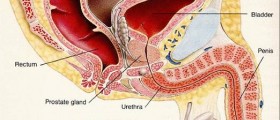
Female CircumcisionFemale circumcision is also known as female genital mutilation and female genital cutting, and it is a practice common in some Asian and African countries. In some parts of Africa, cutting away of female external genital organs generally represents sort of initiation ceremony. It is believed that custom of female circumcision originates from ancient Egypt.
This procedure has no health benefits for females and can only harm them. Considering the circumstances in which this procedure is done, female circumcision can cause severe pain, permanent health problems and even death.
Female circumcision is mostly carried out on young girls between infancy and age 15.
Risks and Complications of Female CircumcisionComplications of female circumcision were studied in a research that included 290 African women. More then a third of these women had experienced shock, heavy bleeding, infection and urinary infection after the mutilation. Some of them had developed long-term consequences of circumcision such as: Cysts Infertility Urinary tract infections Increased risk of childbirth complications and infant deathsFemale genital mutilation can be classified in three types: Sunna, clitoridectomy and excision and infibulation.
The Sunna type of female circumcision is similar to male circumcision and involves removal of the prepuce of the clitoris.
The Clitoridectomy represents partial or total removal of the clitoris and the prepuce.
The excision and infibulation is the third and the most severe type of female circumcision. This includes excision of entire clitoris, the minor labia and internal faces of the major labia. Remains of major labia are then held together by thorns or stitches. After healing, vaginal opening is significantly narrowed. This prevents normal urine and menstrual flow which can lead to serious gynecological problems.
Infibulation is associated to reduced fertility and sterility. Pregnant women who have been infibulated may encounter lot of problems in delivery so the infibulation is completely opened and restored after the labor. Additionally, infibulated women have painful sexual intercourse due to small vaginal opening and tearing and bleeding may occur. Infibulation scar may even have to be cut open to allow penetration.
In order to gather information concerning circumstances surrounding the mutilation, one questionnaire was designed and given to 300 women from Somalia. They were asked to provide information about age at circumcision, type of circumcision and the person who performed the cutting. Most of the women, precisely 88%, reported they were circumcised with excision and infibulation. Also, most of them responded they were circumcised at home and by lay practitioner usually without anesthetic.

















Your thoughts on this
Loading...